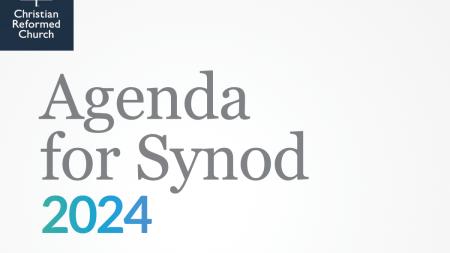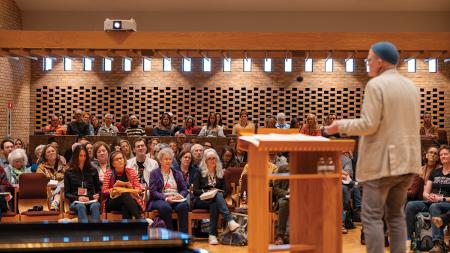Seeing Beyond the Needs to Issues Causing Them

Calvin College
Jesus illustrated an important lesson when he was on his way to heal the dying daughter of a synagogue leader named Jairus, said Mark Mulder, author of the new book Congregations, Neighborhoods, Places.
In Luke 8, the Bible describes how Jesus was making his way through a crowd with his disciples when he felt someone touch him. It was a woman who had been bleeding for 12 years. By simply touching his cloak, she was healed; her bleeding stopped immediately.
And by stopping to acknowledge the woman while he was going to heal the daughter of a powerful community leader, Jesus showed others where their priorities should be. Jesus demonstrated that this woman, who had been pushed to the margins of society because of her condition, mattered just as much as Jairus’s daughter.
“Jesus wanted not only to heal the woman but also to restore her social position. The story works as an example of an act of benevolence pointing in the right direction,” said Mulder, a Calvin College sociology professor whose new book makes the case for churches to expand their view of who they help and why, and to find ways in which they might be able to play a role in helping to change society.
Published by the Calvin College Press, the book utilizes Mulder’s research of interviewing hundreds of church members for various projects as well as his experience of serving as a deacon at Sherman Street CRC in Grand Rapids, Mich.
As a deacon, Mulder and his fellow deacons wrestled continuously with the question of how best to help people who came to them with requests.
Certainly they could give a person the funds to pay a gas or water bill, but Mulder kept asking what the underlying reasons for that person’s poverty were.
“My question was ‘How can the church do both’ — providing benevolence and building a relationship with that person while also illuminating the structural injustices and roadblocks that person is facing,” said Mulder, who has authored other books, including Shades of White Flight, which chronicles how several CRC congregations in Chicago left their buildings behind and moved to the suburbs in the wake of neighborhood demographic changes in the 1960s and 1970s.
In the new book, Mulder integrates other sociological studies with his own research to demonstrate that many Christians in the U.S. “continue to be convinced that the poor suffer from a ‘culture of poverty.’ In other words, they tend to see the poor as being caught in lifestyles that are outside of the middle class mainstream.”
Such a notion, though, does not hold up under the scrutiny of sociological evidence.
These same Christians also tend to believe that only by building a personal relationship and perhaps serving as a mentor to a person in poverty — or by that person having a conversion experience — can someone learn how to rise above their situation.
Members of many churches, though well intentioned, “rarely recognize the institutional and systemic problems that haunt millions of the poor in the United States,” writes Mulder.
Few people in the white middle class realize, he goes on, that often where a person is born, who their parents are, what educational opportunities are available to them, what connections they have to find a job, and whether they have transportation and access to health care are often factors that control and “drive life chances more than any cultural values or behavioral patterns.”
Mulder writes: “As churches seek to be good neighbors in poor communities, they must realize that poverty is not a simple or individual social ‘ailment.’”
Churches need to evaluate their strengths and weaknesses and perhaps come to see that they aren’t social service agencies themselves, but do best when they can complement social service agencies, Mulder writes.
In light of this, churches often have much more to offer a community than they might think: they can offer space to groups and organizations; they can provide different kinds of education; they can play a role in community development; they have members who can be volunteers, and just by remaining in a community they can represent a solid and stable presence.
To get a better idea of their neighborhood and its needs, churches could also use ethnographic methods. Doing this, they would go out into the community and, over time, observe what is happening, learn what is on people’s minds, and try to sort out how their church can best respond to the concerns people in the neighborhood are expressing.
The key is for congregations to see who they are and what they want to do for the people living nearby — perhaps this could include even finding ways to address those systemic issues leading to poverty.
“What congregations need to do,” Mulder writes, “is to assess carefully, with fresh eyes, their own resources and assets.
“Then, in conversation with residents of their neighborhood, they can begin to map out ways in which these resources can be used to benefit the whole community.”


